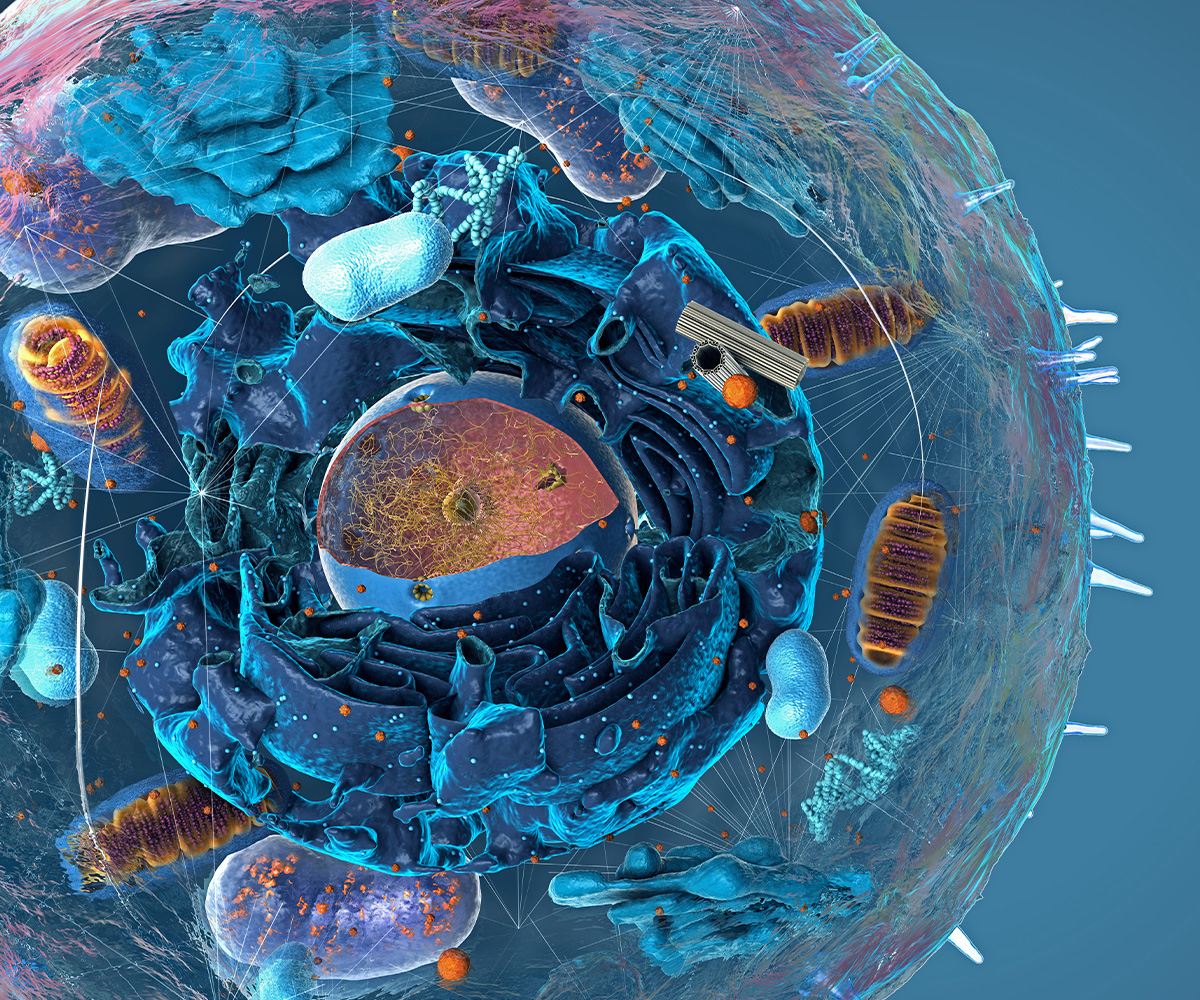
Stock image of intracellular organelles.
Lysosomes are organelles that help break down cellular components, and lysosomal genes are often dysregulated in cancer, neurodegenerative diseases, and lysosomal storage disorders. Understanding the mechanisms underlying lysosome regulation can aid in the discovery of potential therapeutics for a variety of conditions.
In a study from the Lilly Lab at NICHD, researchers showed that the protein complex GATOR2 regulates lysosomal activity in a unique manner. Scientists already knew that a family of transcription factors, including MITF, TFEB, and TFE3, promote the activity of genes necessary for lysosomes. They also knew that protein complex called GATOR2 is important, and it typically works by activating the metabolic regulator TORC1. Previous work demonstrated that TORC1 inhibits the activity of MITF, TFEB and TFE3.
- In a series of experiments the lab showed that GATOR2 can work independent of TORC1 to stabilize these lysosomal transcription factors.
- These transcription factors are often dysregulated in kidney and pancreatic cancers, so the team tested the role of GATOR2 in cancer cell lines. They found that GATOR2 helped maintain the stability of these transcription factors in cancerous cells.
- The findings show for the first time that GATOR2 serves an additional role in lysosomal regulation, reinforcing its role as an essential component for coordinating cellular metabolism.
- If confirmed in additional studies, GATOR2 could potentially serve as a therapeutic target for diseases where lysosomes are dysregulated.
Reference
Yang S, Ting CY, Lilly MA. The GATOR2 complex maintains lysosomal-autophagic function by inhibiting MiT/TFEs protein degradation. Molecular Cell DOI: 10.1016/j.molcel.2024.01.012 (2024)
Learn more about the Cell and Structural Biology Affinity Group: https://www.nichd.nih.gov/about/org/dir/affinity-groups/CSB
 BACK TO TOP
BACK TO TOP